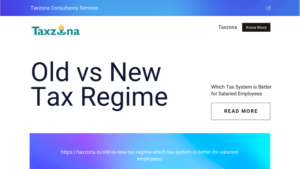In India, GST return filing has replaced a number of other taxes, including the service tax, value-added tax, and excise duty. When it entered into effect on July 1, 2017, the Goods and Services Tax Act (GST Act) was the 101st amendment to India’s constitution. It was passed on March 29, 2017. The Goods and Services Tax (GST) is India’s new centralized taxation system. Also, you can read here for How to file GST Registration – Process, Benefits & Penalty.
All four of the most common types of GST— Central Goods and Services Tax (CGST), State Goods and Services Tax (SGST), Union Territory Goods and Services Tax (UTGST), and International Goods and Services Tax (IGST)—fall under the same national law. The Goods and Services Tax (GST) varies with the kind and price of the commodities or services being offered. Would you like to know about
Tax rates of 0%, 5%, 12%, 18%, and 28% are the most common. Products and services that are absolutely necessary but don’t cost much money belong under the 0% category, whereas those that are more extravagant and unnecessary fall in the 28% group.
Types of GST in India
Different tax rates apply to each of India’s GST categories—Central GST, State GST, Integrated GST, and Integrated Commodity and Services Tax. The Government of India has set these tariffs, and they will be enforced in accordance with those policies.
How Many Types of GST Are There?
There are three types of GST:
- CGST (Central Goods and Services Tax)
- SGST (State Goods and Services Tax
- UTGST (Union Territory Goods and Services Tax)
- IGST (Integrated Goods and Services tax)
What is SGST?
One form of the GST is the State Goods and Services Tax, which is levied by the government of a single state. Goods and services sold inside the state (intrastate, for example in Mysore) are subject to taxation by the state government, with all proceeds going to the Mysore state government. {Pro Tip: GSTR-2B – GST ITC can be claimed or available only when reflected in GSTR 2A/2B wef January 01, 2022}
- Lottery tax, luxury tax, value-added tax, purchase tax, and sales tax are only some of the state levies that have been superseded by the SGST.
- However, both SGST and CGST are applicable if the transaction takes place over state lines. However, only the SGST is levied if the sales are internal to the state.
- A uniform GST rate applies to both GST categories. For instance, when vendors sell goods inside their own state, they are obligated to pay both SGST and CGST. SGST funds are retained by the respective state government, whereas CGST funds are retained by the federal government.
- Goods and services will have different SGST rates based on what the government decides to announce periodically.
SGST Rates:
Commodities | SGST |
Common Groceries such as Tea, Salt, Spices, Sugar, Etc. | 2.5% |
Processed foods Electronic goods | 6% |
Capital Goods, toiletries, etc. | 9% |
Premium luxury commodities | 14% |
What is CGST?
Within the state, or intrastate, sales of goods and services are subject to the Central Goods and Services Tax. It’s subject to taxation by the federal government. This kind of GST is governed by the CGST Act. Here, the SGST and CGST are collected together and the resulting funds are split between the federal and state governments. Click here to read about Recommendations of GST Council are only recommendatory and not binding on Union and State: Supreme Court.
For instance, a trader incurs SGST and CGST on the products while doing a transaction inside the state. The GST rate is split in half between the state and the federal government, with the CGST portion going to the federal government.
CGST Rates:
Commodities | CGST |
Common Groceries such as Tea, Salt, Spices, Sugar, Etc. | 2.5% |
Processed foods Electronic goods | 6% |
Capital Goods, toiletries, etc. | 9% |
Premium luxury commodities | 14% |
What is IGST?
One variant of the GST is the Integrated Goods and Services tax, which is levied on the distribution of tangibles across states. Products and services entering and leaving a country are both subject to this kind of GST. IGST is regulated by the IGST Act and is collected by the federal government. Things to keep in mind while filing GSTR 1 and GSTR 3B for the month of September 2021.
The IGST is distributed to the federal government and the individual states at a rate of 50 percent each. It is the receiving state that receives the State share of the IGST. Any unspent IGST funds are sent to the federal government.
In the event of a supplier making a cross-border supply, for instance, the tax in question would be the integrated goods and services tax (IGST).
IGST Rates:
Commodities | IGST |
Common Groceries such as Tea, Salt, Spices, Sugar, Etc. | 5% |
Processed foods Electronic goods | 12% |
Capital Goods, toiletries, etc. | 18% |
Premium luxury commodities | 28% |
What is UGST?
Products and services sold inside the union territory are subject to a special form of GST known as the Union Territory Goods and Services Tax. This is very much like the SGST, however it is restricted to use inside the union territory.
Dadra and Nagar Haveli, Chandigarh, Andaman and Nicobar Islands, Pondicherry, and Delhi are the only locations where the UGST is not in effect. GST amnesty Scheme and Here, the government’s tax take goes to the Union territory’s government. Given that the UGST is intended to replace the SGST, it is collected in tandem with that tax’s Canadian equivalent, the CGST.
How is the GST determined?
- The location of the supplier and the location of the customer are key factors in determining the GST.
- Supply of goods and services within a state are subject to both CGST and SGST. However, IGST is applicable to the transfer of goods and services across states.
- The IGST rate is thus the sum of the CGST and the SGST.
Objectives of GST:
The major objectives of GST are:
- As a result of the implementation of the GST Act, many additional indirect taxes were phased out and eventually repealed. The GST is a comprehensive tax that encompasses all other significant levies.
- Improves compatibility by making it less difficult for micro, small, and medium-sized enterprises to comply with tax regulations. Additionally, having only one tax to report simplifies the annual return process and GST Registration Online.
- Transparency is improved because the GST lowers the potential for corruption. In commercial settings, for instance, the possibility of a fraudulent input tax credit being claimed is diminished.
- Lower prices due to the GST bill’s elimination of the double taxation system and imposition of taxes only on the net value added component.
- Increase national income – Higher government revenues, as measured by taxes as a percentage of GDP, are indicative of a robust economy. It is possible that the government’s revenue from GST operations may rise if the tax base were widened and taxpayers were more diligent in paying their fair share.
- Productivity and efficiency improvements are expected as a result of the Goods and Services Tax (GST) in India, which seeks to do away with cumbersome paperwork associated with claiming input tax credits. It is also anticipated that company output would increase as a result of the removal of the entrance tax.
Why was GST required?
- By far, the Goods and Services Tax (GST) is India’s most significant tax reform in recent history. Manufacturing and production costs are lowered and economic development is boosted because of the GST’s incorporation of numerous indirect taxes.
- Different states have different VAT rates and rules. Furthermore, it has been observed that governments usually aim to reduce these rates to encourage investors. The federal government and the individual states suffered financial losses as a consequence.
However, GST introduces uniform tax standards throughout all states, applying to a plethora of industries everywhere. Taxes are split between the federal government and the individual states according to a predetermined and officially sanctioned formula. Selling services and commodities nationwide is simplified by the absence of varying state taxes.
Features of GST:
- A Goods and Services Tax Identification Number (GSTIN) or GST Number is issued to any firm that registers for GST under the GST Act. To better maintain tabs on GST payments and transactions, GST officials may use this GSTIN.
- Without GST registration, no company or group may legally do business. Input tax credit is not allowed and penalties are imposed when GST Returns are submitted incompletely.
- The GSTIN acts as a stamp of approval for businesses. Clients, e-commerce sites, government bids, financial institutions, corporations, and others will be better able to recognize your brand as a result. Key Recommendations of 45th GST Council Meeting.
- The Composition scheme is a streamlined registration option made available by GST. This plan is ideal for small enterprises since it is easy to implement. Avoiding GST registration and the associated paperwork, and instead paying GST based on a certain percentage of sales, saves time and effort.
- The Goods and Services Tax (GST) in India has had certain unintended consequences, including price increases—particularly for software—that have made running a company more expensive. Because of this, it has added layers of complexity to how businesses operate.
Conclusion
About 17 indirect taxes collected by federal and state governments have been replaced by the Goods and Services Tax (GST Blogs). There was a lack of standardization in the tax system, however, since each states had their own unique tax laws. This posed a threat to business and trade inside the country as well as raised concerns about tax avoidance. Because to the introduction of GST, all of these problems have vanished.
Frequently Asked Questions
It's important to accurately register and tax your business in order to avoid any penalties or tax obligations. For example, if you are in the business of selling goods and services and your company is registered under CGST (Central GST), then all products that fall within this category will be taxed at the rate of 18%.
If your company falls under SGST (State GST) or IGST (Integrated Goods and Services Tax), then each product sold from your store will attract a different tax rate depending on where it was made. So, for example, if you sell a product made in India at a higher tax rate than a product made in China, you are violating tax laws and may face penalties.
When it comes to accepting payments in India, it is essential to register for the right GST rate. This tax system is designed to help online and offline merchants across the country by ensuring that they are taxed at a single rate. This way, businesses don't have to worry about multiple tax bills and can focus on running their business rather than tax paperwork. The three main taxes under GST are: CGST, SGST, and IGST.
CGST stands for Central Government Sales Tax, SGST stands for State Government Sales Tax, and IGST stands for Integrated Goods and Services Tax. Each tax has its own benefits that can help your business grow. For example, CGST is meant to help promote trade and minimize distortion of competition between states. SGST and IGST help to increase government revenues, which in turn can be used for social welfare programmes or infrastructure development.
Overall, registering for the right GST rate is an important step in expanding and maintaining your business operations in India. By following the correct steps and being aware of the benefits each tax offers, you'll be well on your way to success!
Yes, you can claim back any taxes that have been paid in previous years, regardless of whether or not you are currently registered for GST. This means that all you need to do is file a form called GSTR-3. The CGST, SGST and IGST mentioned above are the three main taxes under the GST regime. Additionally, you may be interested in reading about other tax related topics like EMI Tax overview, How To Deduct Rent And Property Damage From Income During Assessment Year 2019?
This is a common question that people have, and the answer is actually pretty simple. If you have products with different tax rates in your possession at the same time, you will have to pay taxes on them according to the highest tax rate applicable. This means that for example, if a product has SGST (Standard General Sales Tax) and IGST (Integrated GST) rates, you would need to pay taxes on it according to the GST rate. Similarly, if a product has CGST (Common Goods and Services Tax) and IGST (Integrated GST) rates, you would also have to pay taxes on it according to CGST rate.










